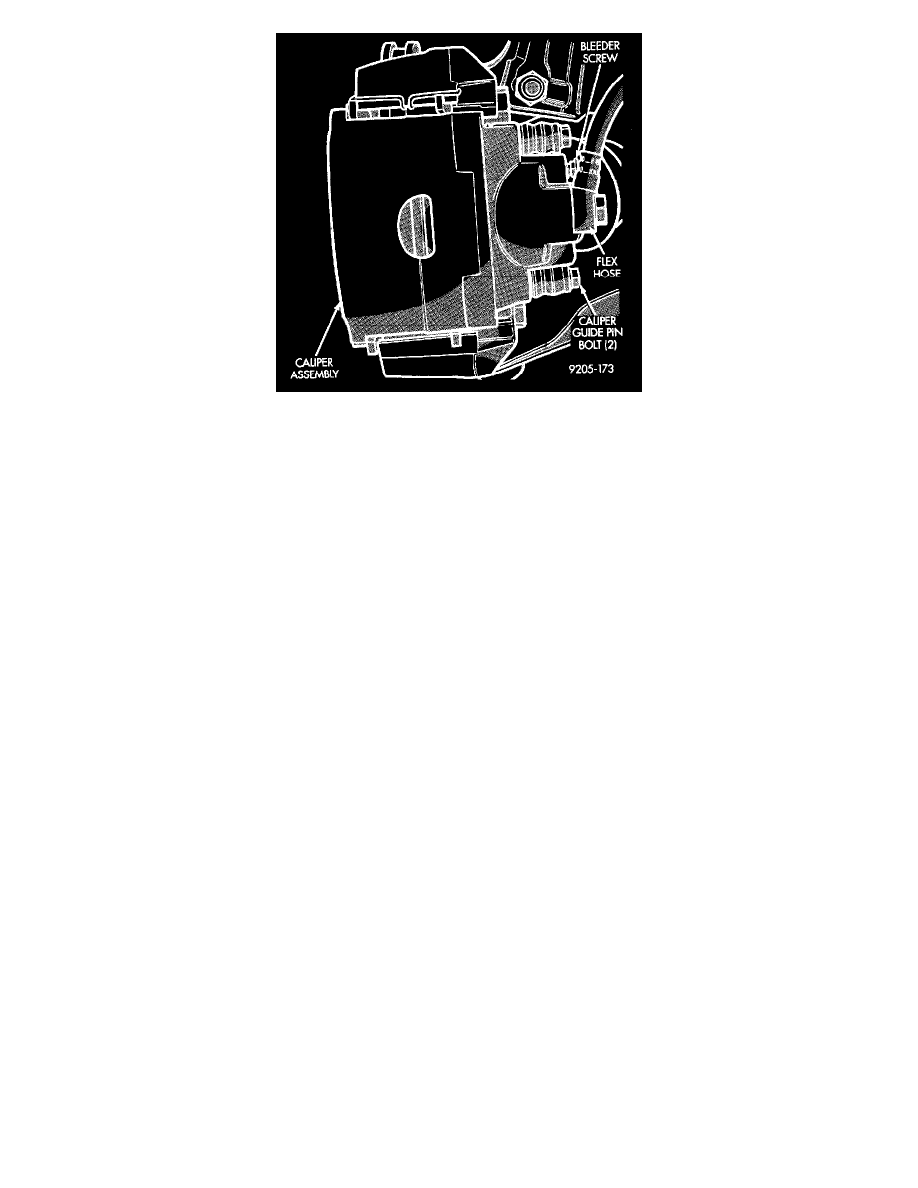Town & Country Van V6-229 3.8L VIN L MFI (1995)

Next, open the bleeder screw at least one full turn or more to obtain an adequate flow of brake fluid.
CAUTION: Just cracking the bleeder screw often restricts fluid flow, and a slow, weak fluid discharge will NOT get all the air out.
After 4 to 8 ounces of fluid has been bled through the brake system. And an air-free flow is maintained in the clear plastic hose and jar, this will
indicate a good bleed.
Repeat the procedure at all the other remaining bleeder screws. Then check the pedal for travel. If pedal travel is excessive or has not been improved.
Enough fluid has not passed through the system to expel all the trapped air. Be sure to monitor the fluid level in the pressure bleeder, so it stays at a
proper level so air will not enter the brake system through the master cylinder.
BLEEDING WITHOUT A PRESSURE BLEEDER
If a pressure bleeder is not available. A good brake fluid flow can be obtained by manual bleeding of the brake hydraulic system, following these
steps:
1. Pump the brake pedal three or four times and hold it down before the bleeder screw is opened.
2. Push the brake pedal toward the floor and hold it down. Then open the bleeder screw at least 1 full-turn. When the bleeder screw opens the brake
pedal will drop all the way to the floor.
3. Release the brake pedal only after the bleeder screw is closed.
4. Repeat steps 1 through 3, four or five times, at each bleeder screw. This should pass a sufficient amount of fluid to expel all the trapped air from
the brake system. Be sure to monitor the fluid level in the master cylinder, so it stays at a proper level so air will not enter the brake system through
the master cylinder.
Test drive vehicle to be sure brakes are operating correctly and that pedal is solid.
